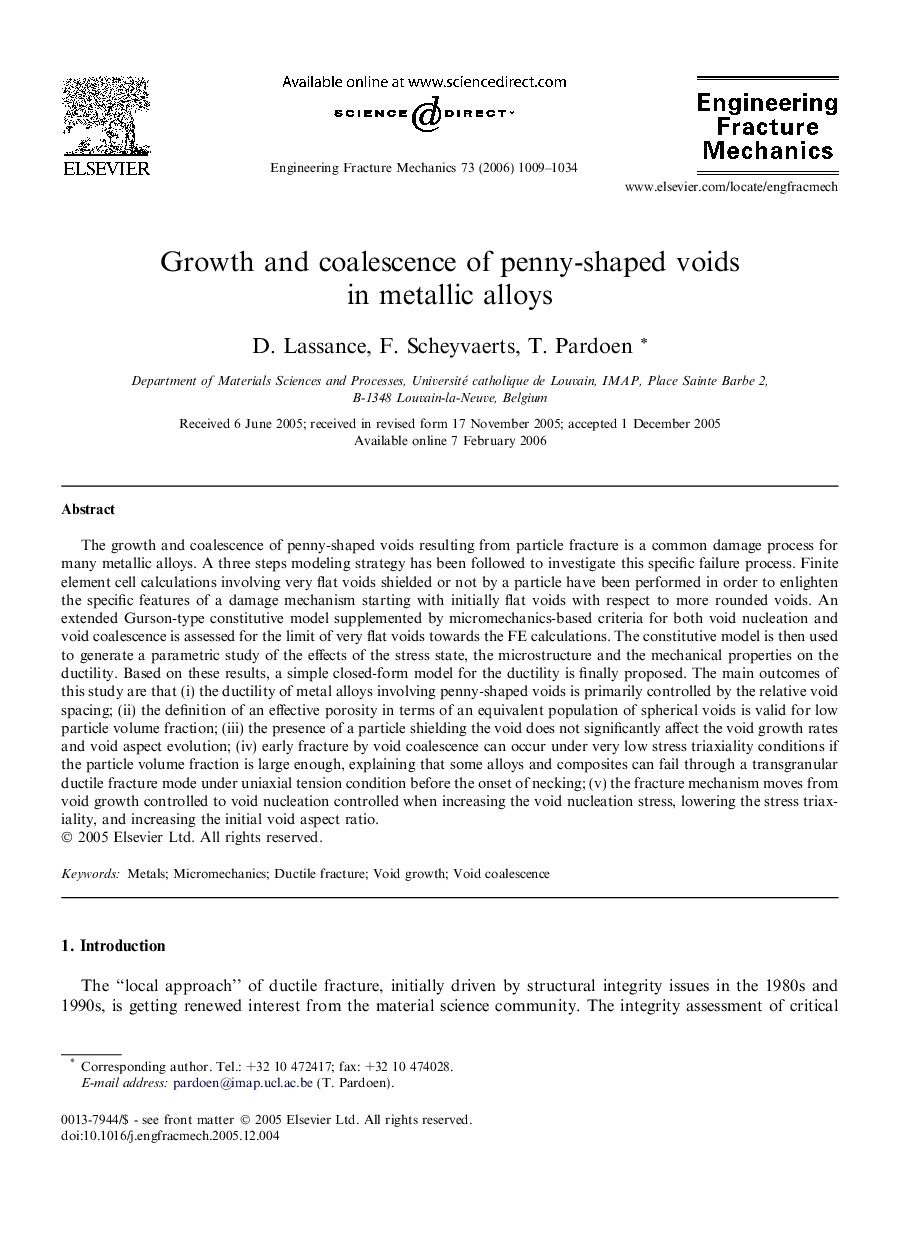| Article ID | Journal | Published Year | Pages | File Type |
|---|---|---|---|---|
| 771579 | Engineering Fracture Mechanics | 2006 | 26 Pages |
The growth and coalescence of penny-shaped voids resulting from particle fracture is a common damage process for many metallic alloys. A three steps modeling strategy has been followed to investigate this specific failure process. Finite element cell calculations involving very flat voids shielded or not by a particle have been performed in order to enlighten the specific features of a damage mechanism starting with initially flat voids with respect to more rounded voids. An extended Gurson-type constitutive model supplemented by micromechanics-based criteria for both void nucleation and void coalescence is assessed for the limit of very flat voids towards the FE calculations. The constitutive model is then used to generate a parametric study of the effects of the stress state, the microstructure and the mechanical properties on the ductility. Based on these results, a simple closed-form model for the ductility is finally proposed. The main outcomes of this study are that (i) the ductility of metal alloys involving penny-shaped voids is primarily controlled by the relative void spacing; (ii) the definition of an effective porosity in terms of an equivalent population of spherical voids is valid for low particle volume fraction; (iii) the presence of a particle shielding the void does not significantly affect the void growth rates and void aspect evolution; (iv) early fracture by void coalescence can occur under very low stress triaxiality conditions if the particle volume fraction is large enough, explaining that some alloys and composites can fail through a transgranular ductile fracture mode under uniaxial tension condition before the onset of necking; (v) the fracture mechanism moves from void growth controlled to void nucleation controlled when increasing the void nucleation stress, lowering the stress triaxiality, and increasing the initial void aspect ratio.
